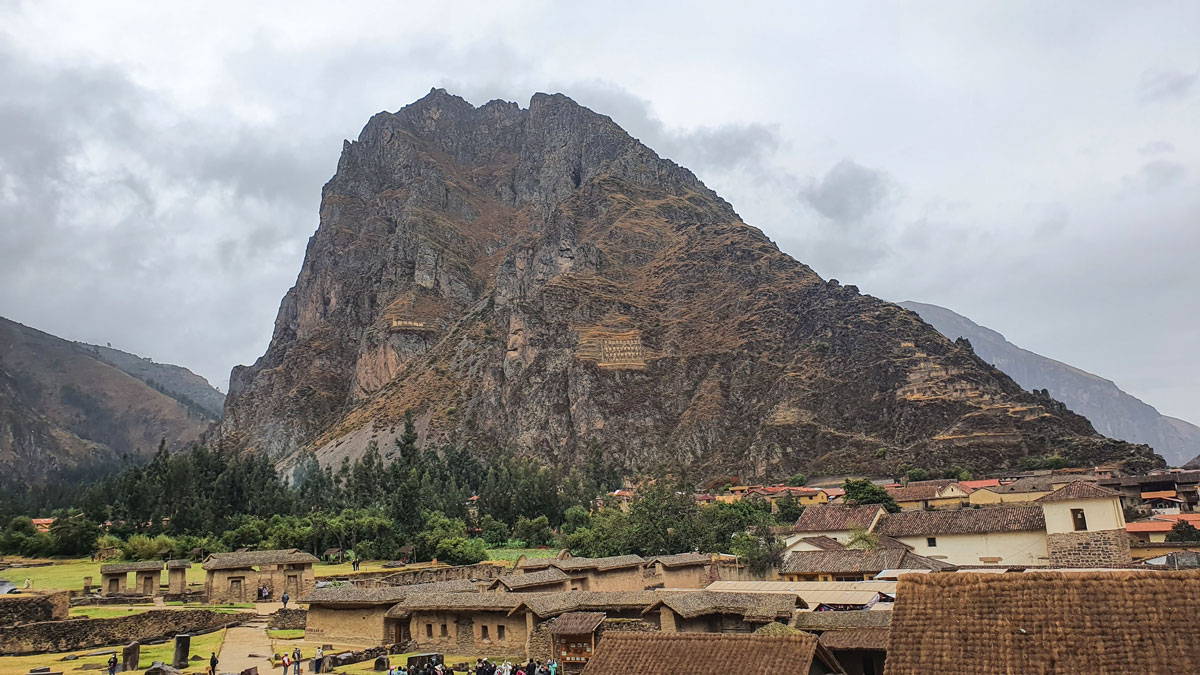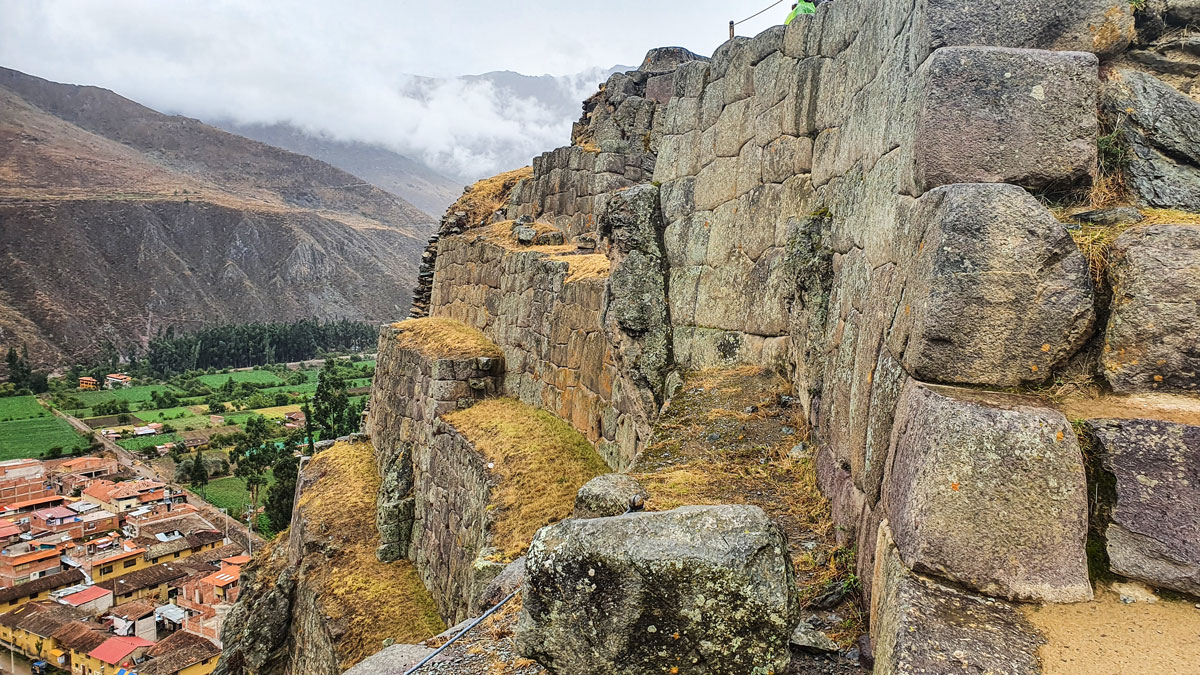
The town is pronounced "oy-yahn-tie-tahm-bo" but everyone calls it "Ollanta" for short. It was named for Ollantay, the Inca general who expanded the frontiers of Tawantinsuyo as far north as Colombia and as far south as Argentina during the reign of the Inca Pachacutec. The general asked for the hand of the emperor's daughter, a request Pachacutec refused, Accomplished though Ollantay was, he was still a commoner. The general rebelled against the ruler and was imprisoned. Ollantay's love may have met a bad end. but yours will not when you glimpse the stone streets and houses, mountain scenery some of the lushest territory in the Valley, and great ruins.
Walk above the town to a formidable stone structure where massive terraces climb to the peak. It was the valley's main defense against the Antis tribes from the neighboring rainforests. Construction began during the reign of Pachacutec but was never completed.

The rose-color granite used was not mined in thi part of the Valley. The elaborate walled complex contained a temple to the sun, used for astronomical observation, as well as the Baños de la Ñusta (ceremonial princess baths), leading archaeologists to believe that Ollantaytambo existed for more than defensive purposes.
The fortress was the site of the greatest Inca victory over the Spanish during the wars of conquest. The Manco Inca fled here in 1537 with a contingent of troops after the disastrous loss at Sacsayhuaman and routed Spanish forces under Hernando Pizarro. The victory was short-lived: Pizarro regrouped and took the fortress.

This self guided trail allowns you to tour the original layout of the town, following a series of blue plaques that outline imporntant sites. Attribute the town's distinctive appearance to Inca organization. They based their communities on the unit of the cancha, a walled city block, each with one entrance leading to an interior courtyard, surrounded by a collection of houses. The system is most obvious in the center of town around the main plaza. You'll find the most welcoming of these self-contained communities at Calle del Medio
The train station in Ollantaytambo is a long 15 minute walk down from main square. The train is the only option for travelling from Ollantaytambo to Machu Picchu, other than the Inca Trail. it is 45 min by driver to the head trail (km 82) to then make a 4 day hiking to Machu Picchu.